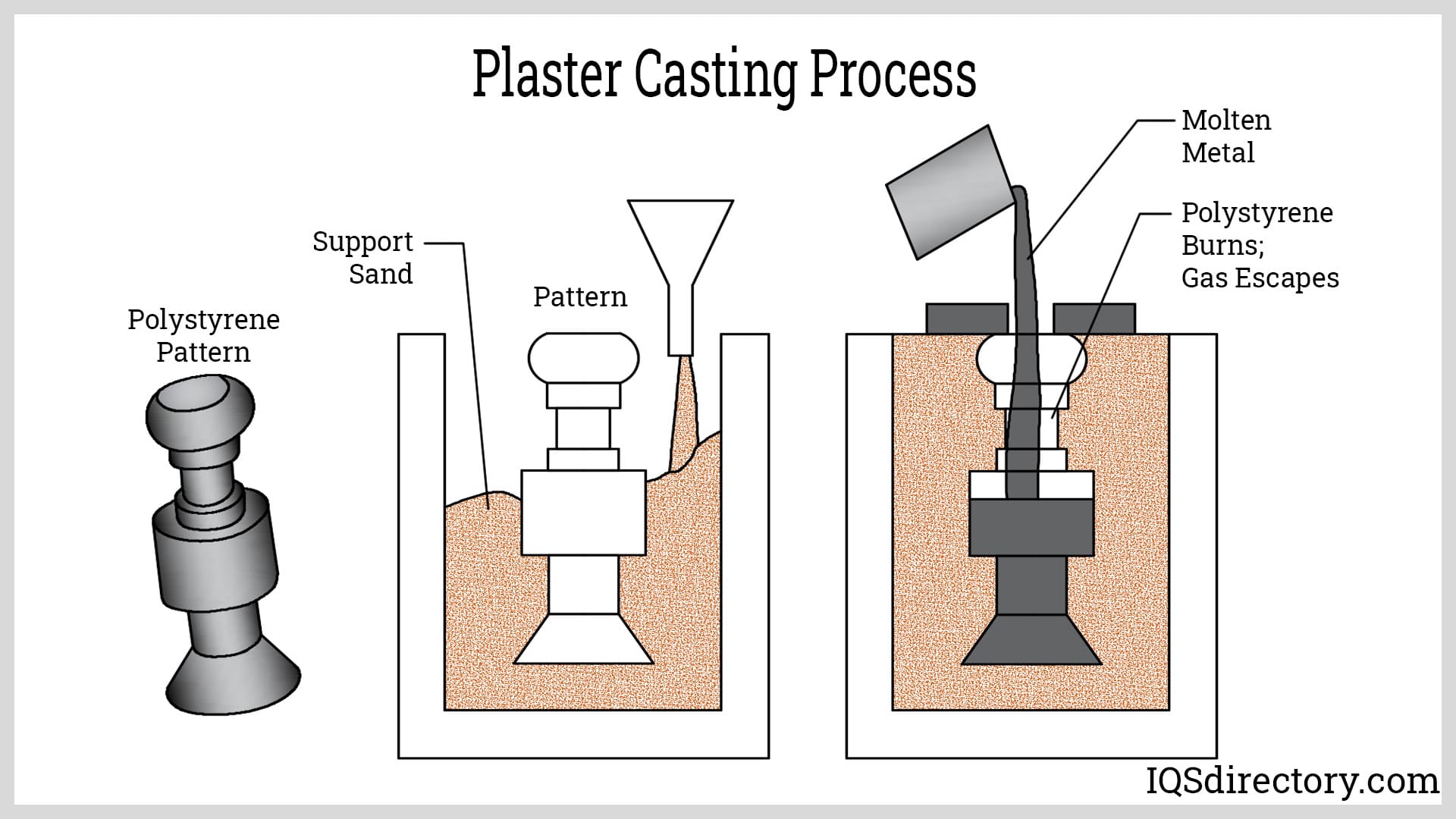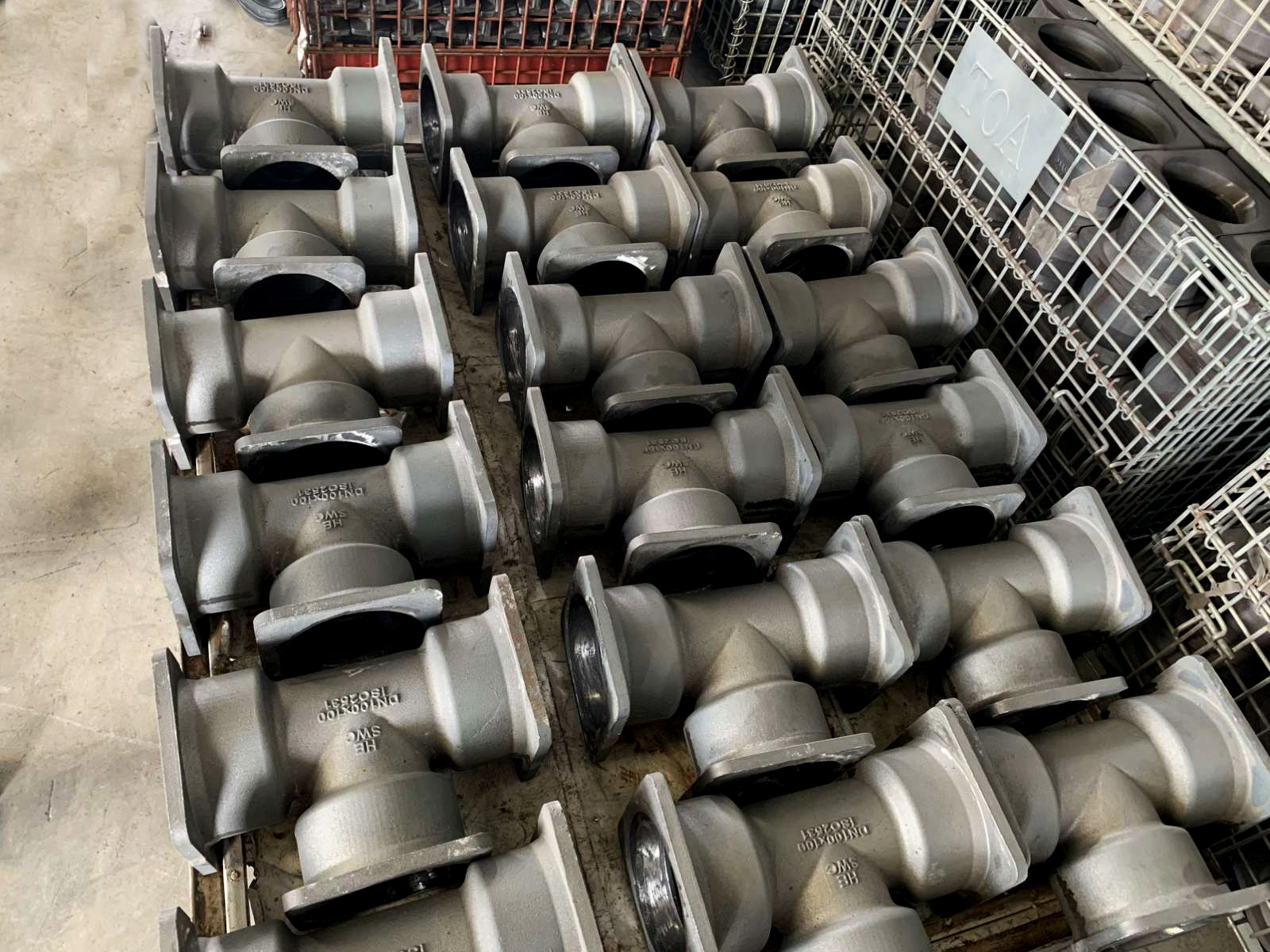A Deep Dive Into the Different Types of Metal Casting and Their Uses
Metal Casting incorporates numerous strategies, each tailored for particular applications and needs. From the affordable sand spreading approach to the precision of investment casting, each procedure has one-of-a-kind benefits. Pass away casting stands out in high-volume production scenarios, while lost foam spreading presents ingenious design possibilities. Furthermore, irreversible mold and mildew spreading is identified for its toughness. Recognizing these methods opens a window into their useful usages and implications in numerous markets. What exists beneath the surface area of these spreading methods?
Sand Spreading: A Flexible and Cost-Effective Method
Although various casting approaches exist, sand spreading continues to be among the most flexible and cost-efficient techniques in the metalworking industry. This method uses a blend of sand and a binding representative to create mold and mildews, permitting the production of components in varied sizes and shapes. Sand casting is especially useful for little to tool production runs, as it calls for minimal in advance financial investment in tooling contrasted to other spreading strategies.
The process begins with the development of a mold and mildew, where molten metal is gathered to create the wanted item as soon as cooled. Its versatility makes it possible for making use of different metals, including steel, aluminum, and iron. Additionally, sand casting can accommodate complex geometries, making it appropriate for a series of applications, from auto components to detailed imaginative items. On the whole, sand casting's effectiveness and flexibility strengthen its relevance in the production landscape.
Financial Investment Casting: Accuracy and Information for Intricate Forms
Financial investment casting attracts attention as a technique renowned for its capacity to produce highly detailed and detailed parts. This procedure involves developing a wax pattern that is covered with a ceramic shell, which is then heated to remove the wax and solidify the shell. The result is a specific mold that can record complicated geometrical forms with impressive precision.
This casting technique is especially valuable for generating get rid of slim walls, great functions, and tight resistances, making it suitable for sectors such as aerospace, auto, and clinical gadgets. Investment casting suits a range of metals, consisting of stainless steel, light weight aluminum, and titanium, making it possible for suppliers to satisfy details product demands.
Furthermore, the process reduces machining needs post-casting, which can enhance effectiveness and lower production costs. On the whole, financial investment casting is a favored choice for applications where precision and detail are extremely important.
Die Casting: High-Volume Manufacturing With Excellent Surface Complete

Die spreading is a highly reliable manufacturing process that masters producing big quantities of steel parts with outstanding surface area coatings. This approach entails forcing liquified steel into a mold and mildew cavity under high pressure, permitting rapid manufacturing cycles and uniformity in the finished items. Commonly utilized products consist of zinc, light weight aluminum, and magnesium, which offer excellent mechanical properties and deterioration resistance.
Die casting is especially advantageous for markets such as auto, electronic devices, and customer items, where precision and top quality are critical. The procedure makes Get the facts it possible for elaborate styles, lowering the demand for added machining and finishing processes. Furthermore, the smooth surface areas created via die spreading frequently require marginal post-processing, leading to reduced overall manufacturing expenses. As a high-volume manufacturing technique, pass away spreading is ideal for manufacturers looking for performance without endangering on top quality, making it a favored option for plenty of applications throughout numerous industries.
Lost Foam Spreading: Ingenious Method for Intricate Designs
Lost foam casting changes the production of complex metal components by using an one-of-a-kind process that gets rid of the need for standard molds. Rather than traditional mold-making, this technique employs a foam pattern that is covered with a refractory material. Once the pattern is set, molten metal is put straight right into the mold and mildew, creating the foam to leave and evaporate behind a precise tooth cavity for the steel to load. This ingenious approach permits detailed styles and thorough features that may be challenging to attain with various other casting approaches.
In addition, shed foam casting can decrease waste and energy intake, making it an environmentally pleasant alternative. Industries such as aerospace and automobile benefit substantially from this method, as it supports the development of lightweight elements with complicated geometries. In general, shed foam spreading attracts attention for its capability to supply high-quality, personalized steel parts efficiently.
Permanent Mold And Mildew Casting: Sturdiness and Uniformity in Metal Parts
Irreversible mold and mildew spreading is an extremely reliable method for producing long lasting and consistent metal components, leveraging multiple-use molds that are normally made from steels such as iron or steel. This casting process includes putting molten steel into these molds, which are preheated to boost product high quality and minimize defects. Making use of recyclable mold and mildews not only decreases waste however additionally permits for higher production prices, making it economically beneficial for producers.
The resulting elements exhibit outstanding dimensional accuracy and surface area finish, making them optimal for applications in automobile, aerospace, and industrial equipment. In addition, irreversible mold and mildew spreading can suit a range of alloys, better increasing its adaptability. The toughness of the cast parts is improved due to the regulated cooling prices that This Site advertise finer grain frameworks. Generally, this spreading method attracts attention for its capacity to produce high-grade steel parts that meet strenuous performance standards, guaranteeing integrity sought after environments.
Regularly Asked Questions
What Products Can Be Made Use Of in Various Steel Casting Processes?

Different materials can be utilized in Metal Casting processes, consisting of aluminum, iron, bronze, and zinc. Each product offers distinct residential or commercial properties, influencing the spreading method's effectiveness, stamina, and viability for various applications in production.
How Do Casting Methods Influence the Mechanical Features of Metals?
Casting techniques significantly affect the mechanical residential properties of steels, impacting factors like ductility, stamina, and firmness. Variants in cooling prices and mold and mildew materials can cause various microstructures, eventually impacting the efficiency of the final item.
What Are the Environmental Influences of Steel Casting Procedures?
Metal Casting procedures can lead to air and water pollution, resource depletion, and substantial power intake (Aluminum Castings). Additionally, the generation of waste materials and greenhouse gas emissions greatly affects the setting and contributes to environment modification
Just how Do You Select the Right Casting Method for a Task?
Selecting the ideal spreading approach includes assessing project this page demands, material buildings, intricacy, and production volume. Aspects like cost performance, surface top quality, and preparation also play crucial roles in determining the most ideal technique.
What Safety and security Safety Measures Should Be Taken Throughout Metal Casting Workflow?
During Metal Casting operations, security precautions consist of using safety gear, making sure correct ventilation, performing tools examinations, preserving a clean work area, and having emergency situation methods in place to deal with prospective hazards like burns or harmful fumes.
From the cost-effective sand casting method to the precision of investment casting, each process has distinct advantages. Pass away spreading is a highly reliable manufacturing procedure that stands out in creating big volumes of metal components with exceptional surface area finishes. Lost foam spreading reinvents the production of intricate metal parts by utilizing a distinct process that removes the demand for typical mold and mildews (Metal Castings). Long-term mold and mildew casting is an extremely efficient approach for generating constant and resilient steel parts, leveraging reusable molds that are normally made from steels such as iron or steel. Numerous materials can be made use of in Metal Casting procedures, consisting of light weight aluminum, bronze, zinc, and iron